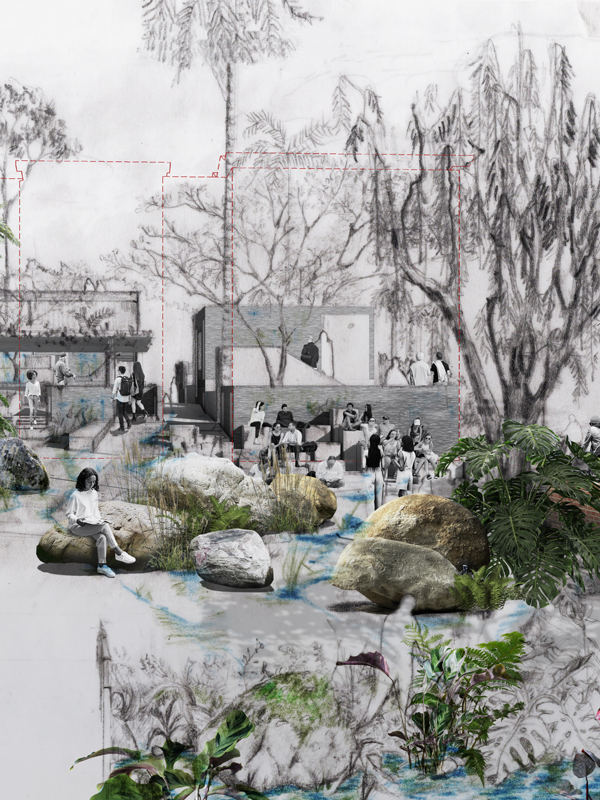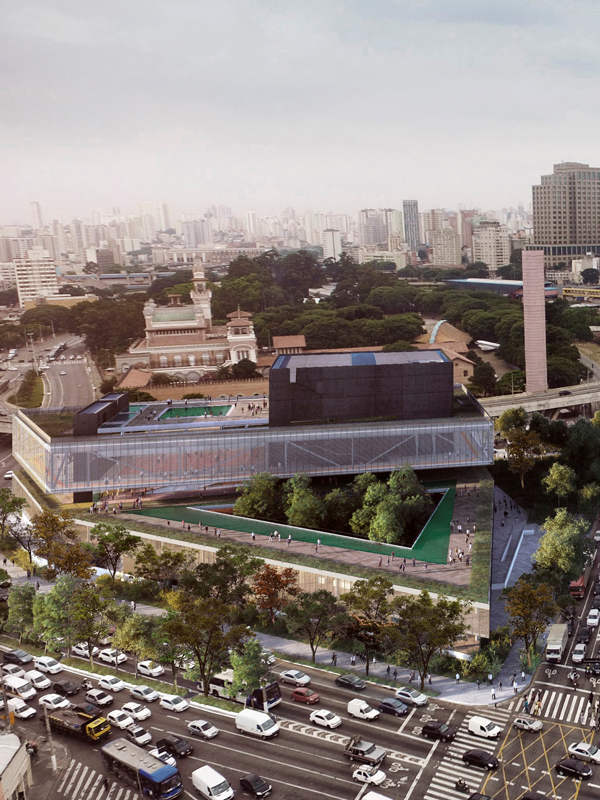Flood-resilient prototype school that safeguards education

This project introduces a bold new paradigm for public education infrastructure in Latin America’s flood risk zones. Developed on land where a previous school had been destroyed by flooding, it is grounded in the principle of building with nature rather than against it.
Located in a low-lying district often hit by seasonal floods, the school’s design accepts periodic inundation as inevitable and harnesses it as a design driver. Instead of expensive levies or relocation, the architects added a new elevated structure featuring a higher level of classrooms, labs, and libraries safely, all above the high-water mark. The ground floor is used as an open-air playground, community sports facility, and assembly area, leveraging flood-tolerant materials and designed to be cleaned or repaired after water recedes. This set-up respects the context of riverine communities. It keeps the school within the neighborhood it serves, rather than relocating it to a less flood-prone area.
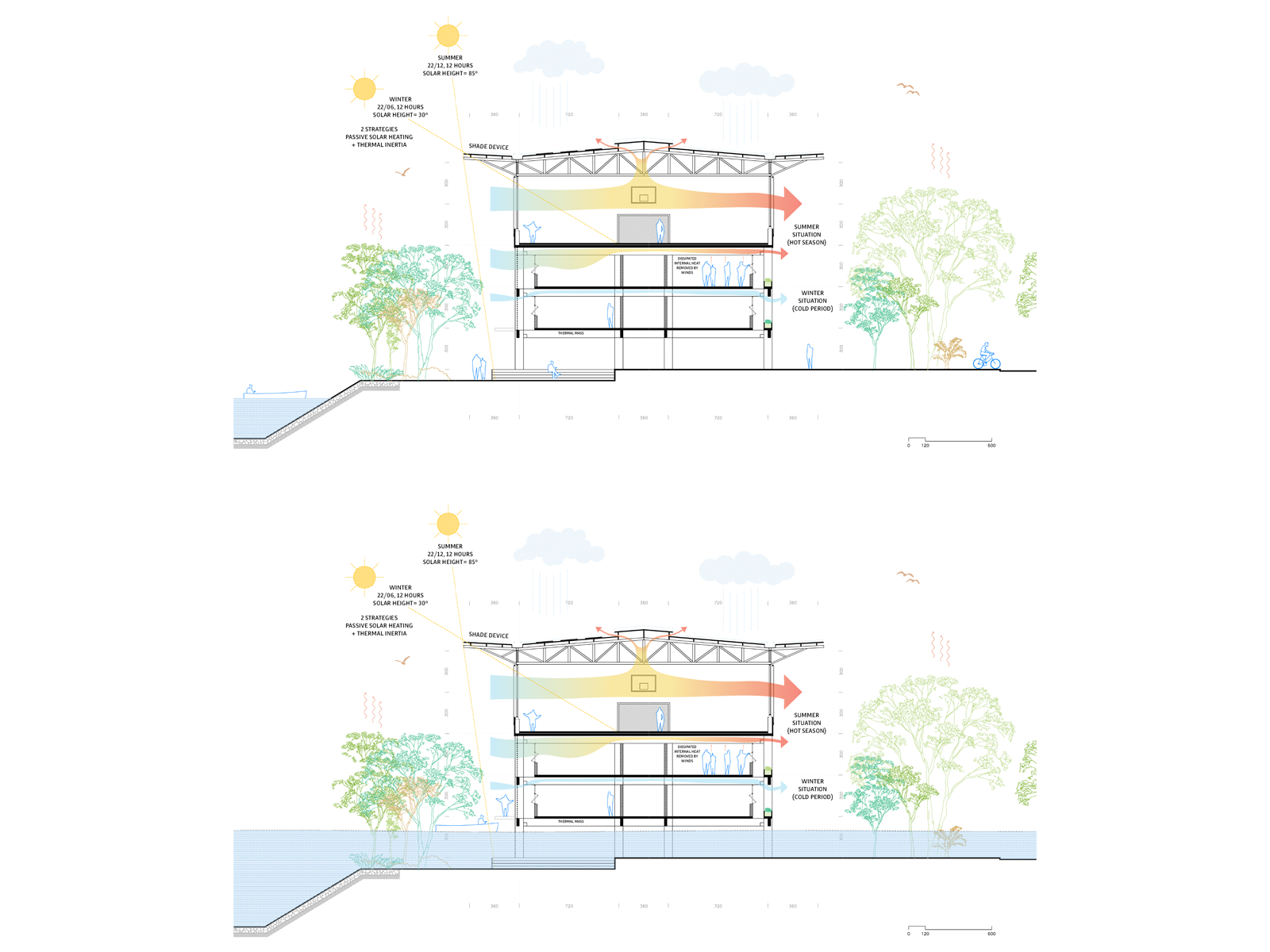
Strengthening the project’s social value, the building's rooftop is engineered to serve as an emergency shelter or relief center for the town. These dual-purpose spaces exemplify a systems approach to resilience – every architectural element has multiple functions for both everyday use and crisis conditions. Durable local materials and passive design features enhance the structure. Solar exposure is carefully managed through orientation-based openings, using bamboo sunshades or planters where needed; classrooms and high-occupancy areas face north, while transitional and short-stay spaces are placed to the south to optimize comfort. These measures further reduce environmental impact while keeping maintenance economical, crucial for public schools with limited funding.

Jury Appraisal
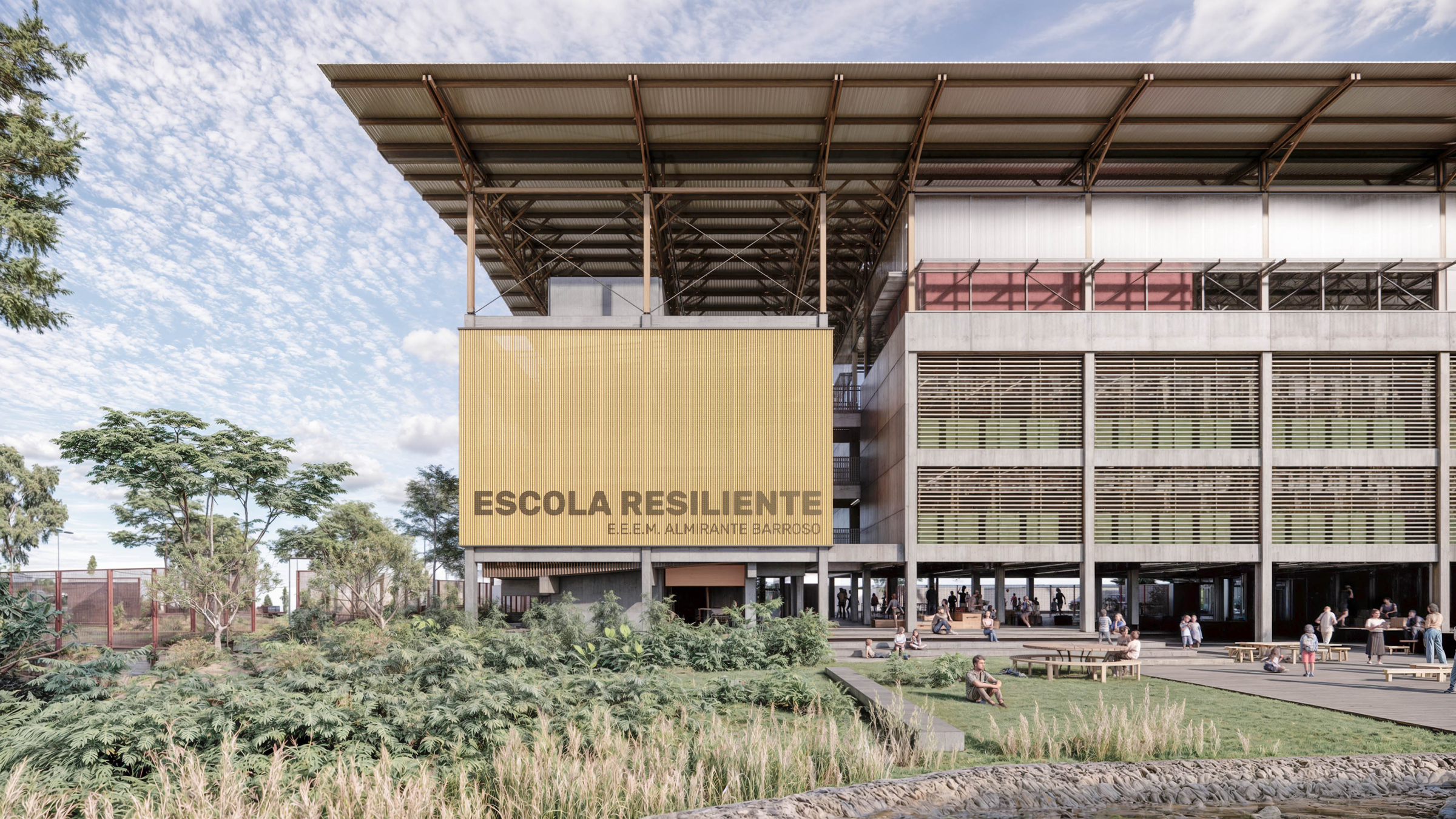
Jurors noted how the project’s “simple design interventions” elegantly solve complex problems – a concept likely to influence many other towns facing similar challenges. By proving that a modest school can be innovatively adapted to climate realities, this project provides a transferable blueprint for sustainable construction in vulnerable regions across Latin America and beyond. The jury was also impressed by the project’s commitment to public education, highlighting its role in inspiring students to face future challenges. Overall, the winning effort was celebrated as a smart and humane response to climate volatility – one that delivers social value by protecting both children and their right to education.
Project Team
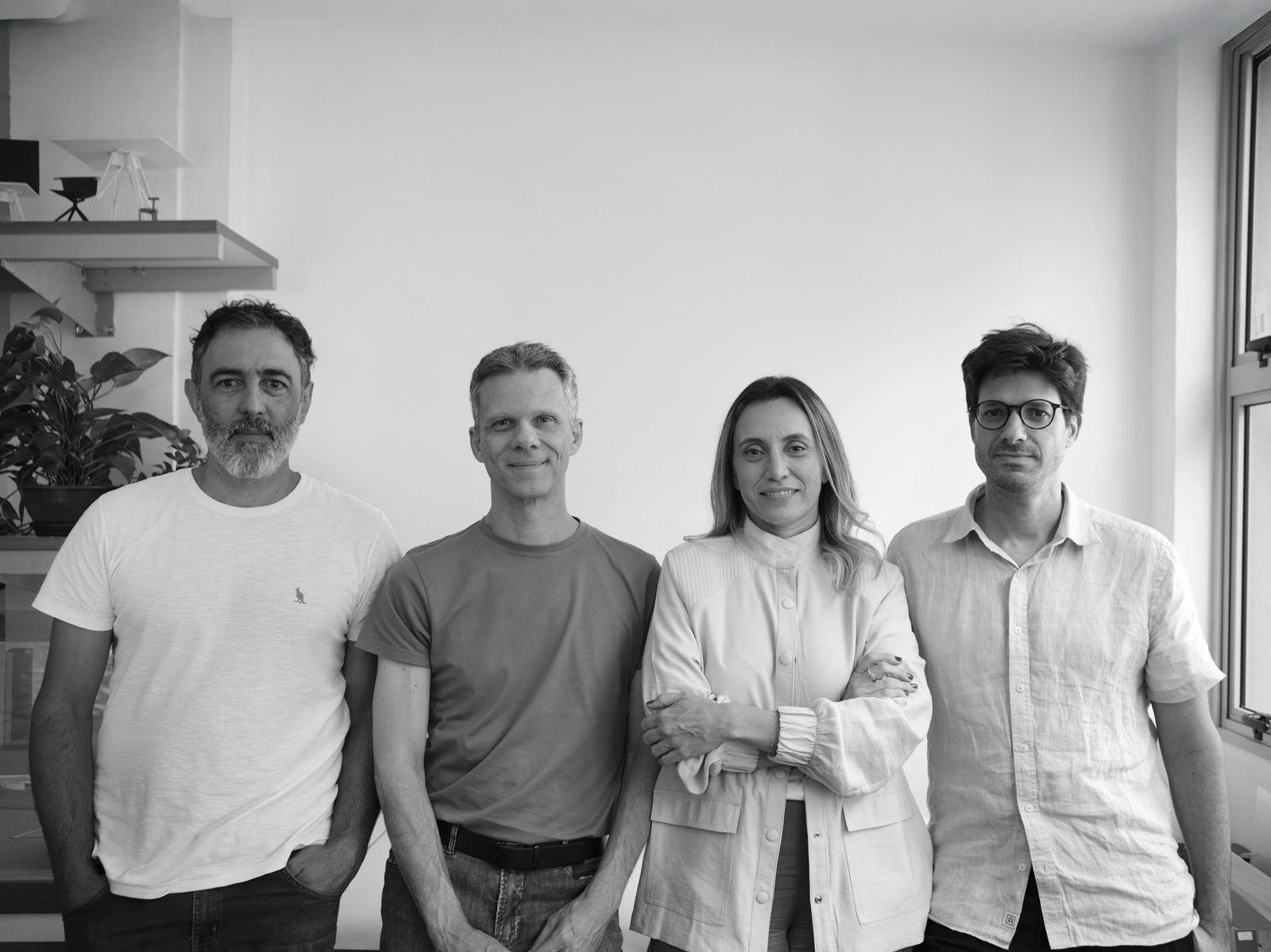
Main Authors: Vinicius Andrade, Marcelo Morettin, Marcelo Maia Rosa, and Renata Andrulis, Andrade Morettin Arquitetos Associados
Further Authors: Elisa Martins and Cássio Sauer, sauermartin
Client: Felipe Souza and Ricardo Henriques, Instituto Unibanco, and Stefanie Eskereski, Secretaria de Estado de Educação do Rio Grande do Sul
Themes
Education & Professional Development | Social Equity & Inclusion | Well-Being & Comfort
Status
Detailed Design Stage
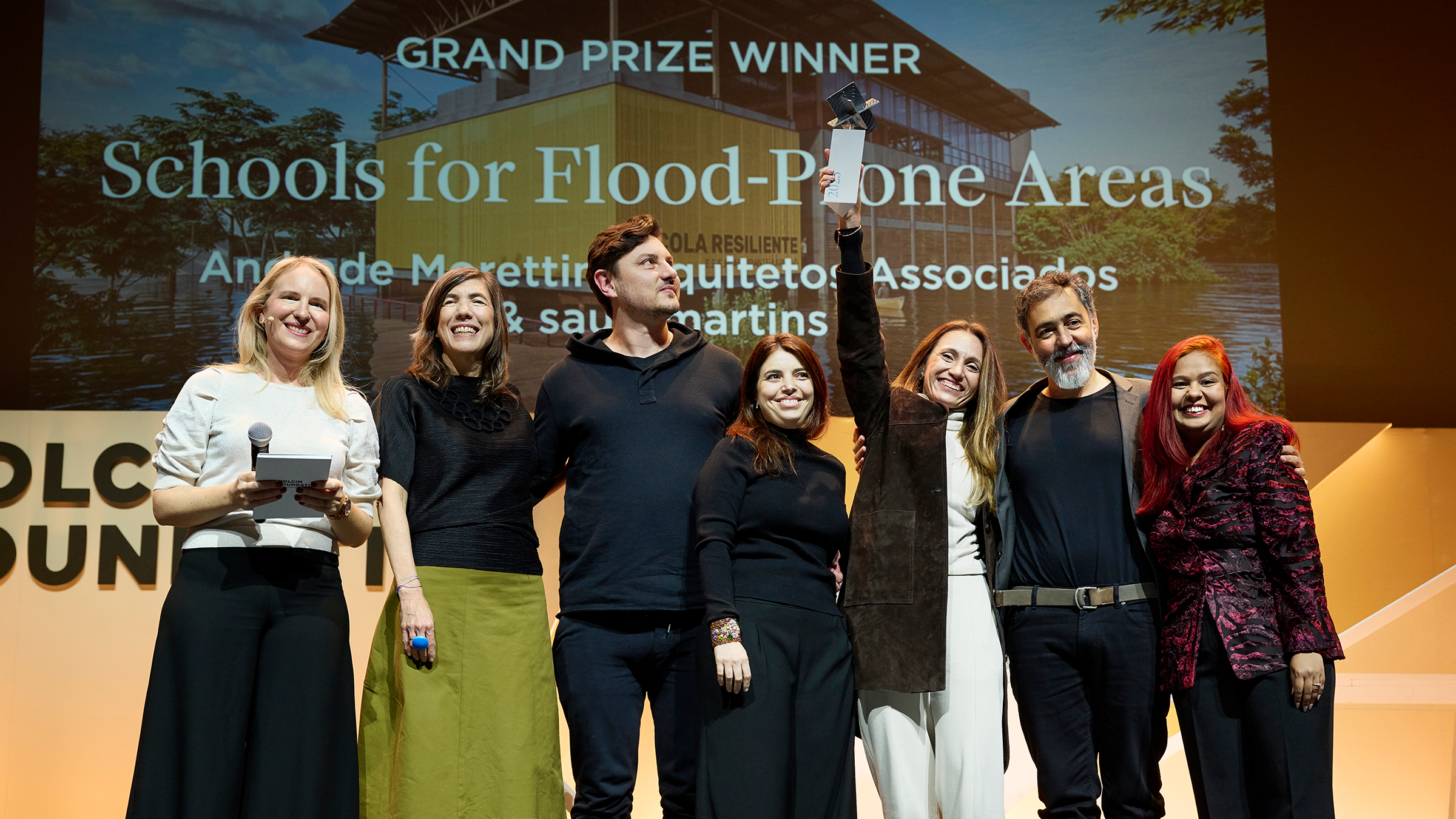
Acknowledgements
-
Additional Credits
Architecture Design Team
Andrade Morettin Arquitetos Associados
Izabel Sigaud, Ana Paula Silveira, Arthur Frensch, Maria Carolina Bomeny, Lucas Santos, Eric Dick, Luiza
Minassian and Daniel Zahoul (architects), Camille Loucatelli, Lucas Borges and Maysa Costa (interns);sauermartins
marina lira (coordinator), morgana goulart, bernardo kich, rafael moreira, igor de march, gabriela campos,joão palma and pedro brandelli
Building Systems
Sistemas Engenharia Ltda.
Acoustics
Sresnewsky Consultoria Ltda.
Bioclimatic performance
Dolce Arquitetura e Consultoria
Concrete / Timber Structure
Gama Z Engenharia Ltda.
Foundations and Retaining Structures
MLF Engenharia e Projetos
Lighting Design
Estudio Lodi
Landscape Design
CAPIM – Solutions in Landscapes and Urban Ecology
Budgeting
Monteiro Forma Engenharia Ltda.
Socio-environmental Consulting
Instituto Alana
Special Consultants
Secretaria de Obras Públicas do Estado do Rio Grande do Sul
Secretaria da Reconstrução Gaúcha
Sustainability Goals
-
Healthy Planet
Sustainable building design through passive measures
Shade and natural ventilation are key strategies for the building’s passive conditioning. A large roof with extended eaves provides ample shade while ensuring cross-ventilation beneath, even on rainy days. The fragmented, elevated structure allows continuous airflow at its base and within its spaces. Solar exposure is carefully managed: openings vary by orientation, using bamboo sunshades or planters as needed. Spatial distribution follows solar criteria—classrooms and high-occupancy areas are on the north-facing side, while transition and short-stay spaces are on the south-facing side, optimizing comfort.
Efficient construction and operations
Modular and Resilient Construction System: The industrialization of construction processes enhances the building’s strength and flexibility. Given its high replicability with various adaptations, we implemented a pre-cast concrete system with modular components for the superstructure and a prefabricated modular wooden system for the roofing. Concrete ensures durability and low maintenance, while wood provides lightness and compatibility with large spans. Building Infrastructure and Space Occupation: To address flooding, essential equipment—meters, electrical panels, and digital systems—along with offices, labs, and archives, are relocated to upper levels.
Landscape & Biodiversity Integration
The landscape design integrates new educational dynamics, emphasizing environmental education and native flora. This approach encourages local fauna to inhabit the newly established microclimate. Beyond serving as an open-air learning space, the garden features a microforest, a seedling nursery, a community vegetable garden, and a small wetland for wastewater phytosanitary treatment. Given the project's replicability and territorial reach, the goal is to multiply these localized actions, creating a statewide network in Rio Grande do Sul. This initiative fosters territorial transformation, raises community awareness, and contributes to developing a sponge city.
Land use & Transformation
Elevation from the Ground: Designed for resilience against frequent floods, the building is elevated on stilts as a key passive strategy. Rather than containing water, the design allows natural flow with minimal impact, avoiding costly maintenance systems like gates, valves, and pumps. Verticalization: Reducing the building’s footprint minimizes land occupation, enhancing soil permeability to mitigate flooding, increase vegetation cover, and improve the microclimate—contributing to a sponge city. It also enables concentrated foundations, optimising construction on low-bearing capacity soils common in flood-prone areas.
-
Thriving Communities
Participatory Design
Beyond designing a model school, this project proposes a system for constructing and renovating public schools statewide, detailed in an illustrated guide. It is a collaborative effort, engaging stakeholders both during development and future implementation. In addition to fostering dialogue with local agents to address challenges and develop socially and territorially relevant strategies, the guide will support future change-makers in applying its principles. One key strategy encourages those overseeing construction to map, study, and integrate local building techniques, ensuring that each school unit reflects regional knowledge and resources.
Community Impact and Resilience
The state's public school network forms an extensive infrastructure with deep territorial and social reach, extending beyond education. Schools are envisioned as multifunctional community hubs that foster well-being and social cohesion. Emergency Situations: Given the region’s frequent floods, schools can serve as shelters and distribution centers during disasters, enhancing community resilience. To support this, gymnasiums are placed on rooftops and equipped with survival infrastructure, including kitchens, dining areas, restrooms, potable water, and photovoltaic power. These spaces are designed to accommodate the community and assist civil defense operations.
-
Viable Economics
Financial Feasibility
This project includes constructing a model school and creating a guide to direct new school construction and adapt existing ones. Designed for public investment, it prioritises feasibility and cost-effectiveness, ensuring compliance with public audits for responsible resource use. The adoption of industrialized construction systems enhances reproducibility and economic efficiency. A key strategy is an infrastructure and accessibility module functioning as a “plugin,” upgrading existing structures into resilient schools. This module includes accessibility ramps, restrooms, storage, mechanical rooms, a potable water reservoir, and a photovoltaic power system.
-
Uplifting Places
Aesthetic Qualities and Cultural Integration
As symbols of the State’s presence, schools emphasize hospitality and inclusivity, incorporating recognizable elements that reaffirm their role as shelters of resilience. Raising the building on stilts draws inspiration from traditional local architecture, commonly found in riverine areas but often overlooked in contemporary design. This typology, known as palafitas, is characteristic of hot, humid regions. Cultural integration is further strengthened through open connections with community facilities, such as the fishermen’s cooperative. Additionally, the project incorporates traditional bamboo craftsmanship as solar protection elements for the building’s windows.


